Candela, lumen and lux are so-called photometric quantities and SI units (=international system of units) in lighting technology and lighting. We regularly evaluate and optimize these values in our in-house lighting laboratory and share our knowledge below.
Comprehensible explanations and clear graphics explain the units of light and their differences. Before we delve into the technical lighting terms (e.g. luminous flux, luminous intensity, illuminance, CRI…), let’s start with the basics. Let’s start with a central question:
What is light?

Light refers to the portion of electromagnetic radiation that is visible to humans. This range is between 380 and 780nm (nanometers). Depending on the wavelength, the sensory stimulus is perceived by the eye as a different color. We speak here of monochromatic (single-color) light and the corresponding wavelengths for the so-called spectral colors can be seen in the table.
The neighboring ranges of visible light are UV (ultraviolet: 100 – 380 nm) and IR (infrared: 780 nm – 1 mm).
| Farbe | Wellenlänge (nm) |
|---|---|
| Violett | 380-420 |
| Blau | 420-490 |
| Grün | 490-575 |
| Gelb | 575-585 |
| Orange | 585-650 |
| Rot | 650-780 |
Lumen (lm) - unit of luminous flux

Lumen (lm) is the SI unit of luminous flux. It describes how much visible light a light source emits in all directions. Luminous flux is a photometric quantity and evaluates the brightness of a lamp.
Lumens are therefore the most important light unit for comparing lamps and luminaires! The electrical output (measured in watts) must not be used as the primary comparison here. An 8-watt spotlight, for example, can have more lumens than a 75-watt light bulb! The number of watts only says something about the consumption and, in connection with the lumens, about the efficiency and luminous efficacy, but not about the brightness! More information on the correct comparison of light sources can be found in this article or in the article Lumen in Watt.
As with luminous intensity ( candela unit), luminous flux is considered from the lamp’s point of view, i.e. as an outgoing light quantity! The luminous flux of a luminaire or lamp should always be determined in a lighting laboratory, as the calculated values are too far removed from reality due to many influences!
Candela (cd) - unit of luminous intensity
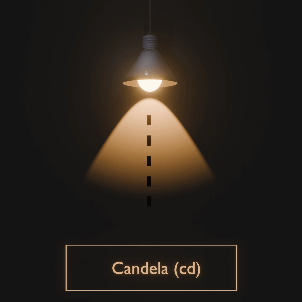
The luminous intensity describes the luminous flux (unit lumen) in relation to a solid angle and is specified in the unit candela (cd). It is a photometric quantity that takes into account the human eye’s perception of brightness and represents a property of the light source.
Good to know: The solid angle is a three-dimensional angle! It is the three-dimensional counterpart to the two-dimensional angle defined for the plane and is usually given in steradian as a unit. 1 steradian encloses an area of 1m² on a spherical surface of a sphere with a radius of 1m.
Admittedly, the issue of candela and steradian is quite complicated and fortunately this has not become established on the market as a criterion for comparing light sources. It is much easier to compare the luminous flux and the beam angle of the light source.
Lux (lx) - unit of illuminance
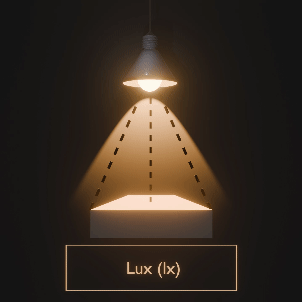
Lux is the unit for illuminance and indicates how much light from the light source strikes a certain surface. Illuminance is the photometric quantity that best reflects the eye’s perception of brightness and is therefore colloquially referred to as brightness.
As every lamp emits light at an angle, the lux decreases the further away the luminaire is, as the illuminated area for the luminous flux becomes larger.
In contrast to lumen and candela, lux is a light quantity on the receiver side and describes the area density of the luminous flux on the illuminated surface. For this reason, illuminance can also be specified equivalently as lm/m², whereby lux is the recommended designation. Illuminance is dependent on numerous external factors (multiple light sources, reflections from walls, etc.), which is why a lux value for a luminaire or light source is not reliable.
NIT or cd/m² - unit of luminance
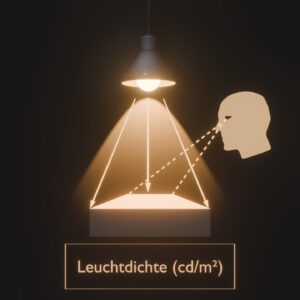
Luminance describes the impression of brightness made on the eye by a luminous surface. Like luminous flux and luminous intensity, luminance is an emitted quantity and is viewed from the perspective of the luminaire. In the case of luminance, the total luminous flux emitted by the luminaire is also considered, but the emitting surface is also taken into account.
The more light is emitted over a smaller area, the brighter it appears to the eye when it looks into the light source. A light bulb therefore has a much higher luminance than a large-area surface light with the same luminous flux.
lm/W - unit of luminous efficacy and efficiency
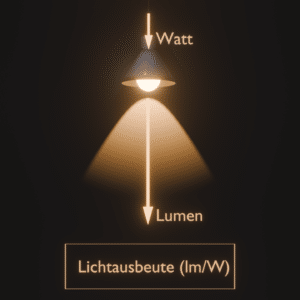
The luminous efficacy is referred to as the efficiency of LED lights and is given in lumens per watt (lm/W). A higher value indicates a higher efficiency. Luminous efficacy is an important value for comparing light sources and lamps, but should not be used as the sole criterion for comparison (more on this topic: Tips for LED spotlights).
There are several points that have a significant influence on the efficiency of the luminaire. If these parameters are not taken into account in the comparison, the efficiency figure is a meaningless marginal note with no significance!
However, the most important comparison criterion remains the luminous flux with its unit lumen and should therefore be considered first.
How do you compare light sources correctly? Which units of light are relevant?
Which units of light should we pay attention to now? The first thing to look at when making a comparison is the luminous flux. It is important to compare not only the lumens but also the beam angles! The light bulb is a 360° omnidirectional spotlight and distributes the light almost spherically. However, a light source with a reflector or lens focuses the entire luminous flux onto a cone of light (e.g. 60°), making this light source appear significantly brighter in comparison. This is because the higher luminous intensity also increases the illuminance and luminance.
If you then compare the luminous efficacy, i.e. the efficiency, you have to take other parameters into account:
- Color temperature: A higher luminous efficacy value is achieved with colder color temperatures. For example, a light source with 4000K has more lm/W than the same light source with 2700K.
- Color rendering index: A higher CRI leads to a lower luminous efficacy.
- Temperature of the light source (degradation): Efficiency decreases when the light source heats up, which is often (intentionally or unintentionally) not taken into account when measuring in the lighting laboratory. As a result, the data in the data sheet should be treated with caution.
In summary, it is important to carry out the comparison correctly. Luminous efficacy is relevant, but should not be used as the sole criterion for comparison. Look for luminaires and light sources of higher quality.
Incidentally, an order of magnitude of approx. 10-15% can be assumed for each of these points.
Kelvin (K) - unit of color temperature / light color

Kelvin is the unit of color temperature and indicates the color impression of white light. As the color temperature increases, the light color changes from yellowish warm white (below 3300K) to neutral white (3300K – 5000K) to bluish cold white (above 5000K).
Would you like to find out more about color temperature, recommendations for the right light color in your home and the effect on you and your surroundings? Then read our interesting article on color temperature.
For even more information and options, we recommend the article CCT LED: When, how and where to use which color temperature and what effect it has on you and your living space.
Color rendering index (Ra) / CRI
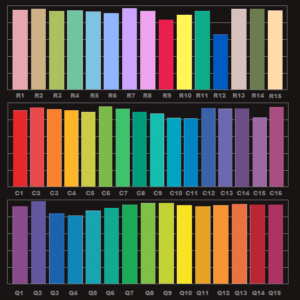
The color rendering index indicates how close artificial lighting comes to natural sunlight. It evaluates how faithfully illuminated reference colors are reproduced. Any distorted color rendering worsens the index. The values for the Ra range from 0 (no fidelity at all) to a maximum of 100.
A CRI of 80 should be set as the lowest minimum, but a color rendering index of over 90 (= standard for LED lights from Emilum) is recommended, as the color perception is significantly improved. This quality criterion is independent of the color temperature. A light source with 2700K, for example, can also achieve a CRI of 100, as can a light source with 5700K.
Summary of the light units:
The photometric quantities of lighting technology and the units of light are clearly listed here.
| photometrische Größe | Einheit | Beschreibung | weitere Informationen |
|---|---|---|---|
| Lichtstrom | Lumen [lm] | gesamtes abgegebenes Licht der Leuchte | wichtige Größe für den Vergleich von Leuchten und Leuchtmittel |
| Lichtstärke | Candela [cd] | Lichtstrom der Leuchte abhängig vom Raumwinkel | kein wichtiges Vergleichskriterium von Leuchten |
| Beleuchtungsstärke | Lux [lx] | wie viel Licht auf einer Fläche auftrifft | wichtige Größe für die Ermittlung der benötigten Helligkeit für Räume |
| Leuchtdichte | NIT [cd/m²] | Helligkeitseindruck, der von einer leuchtenden Fläche ausgeht | Ein Maß für die Blendung bei Flächenleuchten |
| Lichtausbeute | Lumen/Watt [lm/W] | Wirkungsgrad der Leuchte | Qualitätskriterien wie Farbwiedergabeindex, Degradation, Farbtemperatur beeinflussen die Effizienz massiv und müssen bei einem Vergleich berücksichtigt werden |
| Farbtemperatur | Kelvin [K] | Farbeindruck von weißem Licht. Umso niedriger, umso wärmere Lichtfarbe | Extra-Warmweiß: < 2500K Warmweiß: 2500K-3300K Neutralweiß: 3300K-5000K Kaltweiß: >5000K |
| Farbwiedergabeindex (CRI) | Ra (0-100) | Qualitätskennzahl für Licht: 100 bedeuet selbes Spektrum wie natürliches Licht | Ra 0- 79 niedrige Qualität Ra 80- 89 durchschnittliche Qualität Ra 90-100 hohe Qualität |
Many more guides, tutorials and more
Finally, we would like to recommend our service area to you. In addition to this tutorial on the units of light, you will find further useful assistance, free tools, concentrated knowledge (e.g.: lighting lexicon, selection guide for power supply units for LED strips and spots, which LED spots are the best), ultimate tutorials (e.g.: LED, DMX, …) and much more:
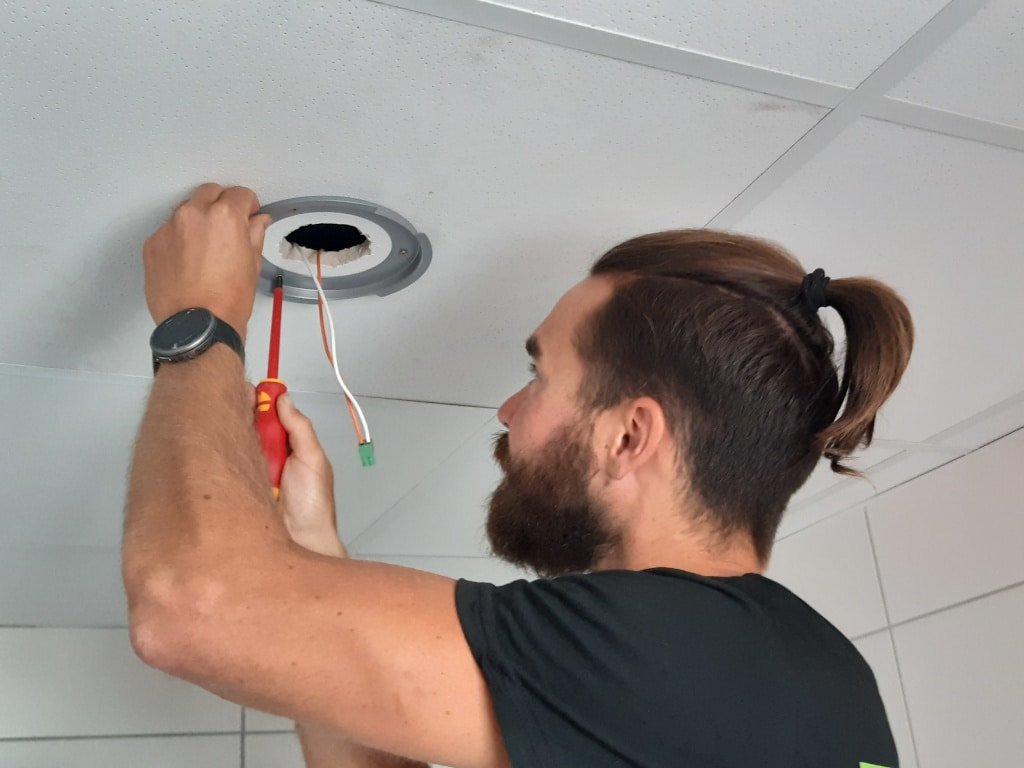
Here you will find know-how contributions, articles and interesting facts on the topics of technology, LED and everything that goes with lighting. Best-practice examples are also explained, as are all the technical details on the subject of lighting
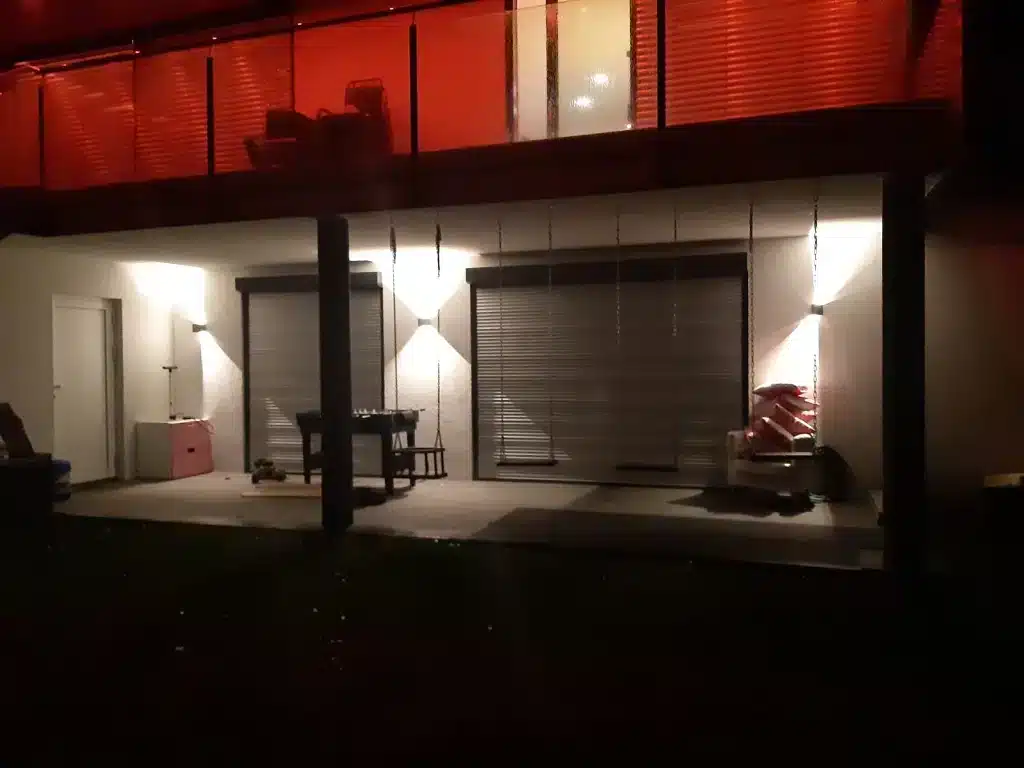
Experience our latest innovations and be the first to learn about new products and technologies. In this section, we not only present these in detail, but also highlight exciting areas of application.
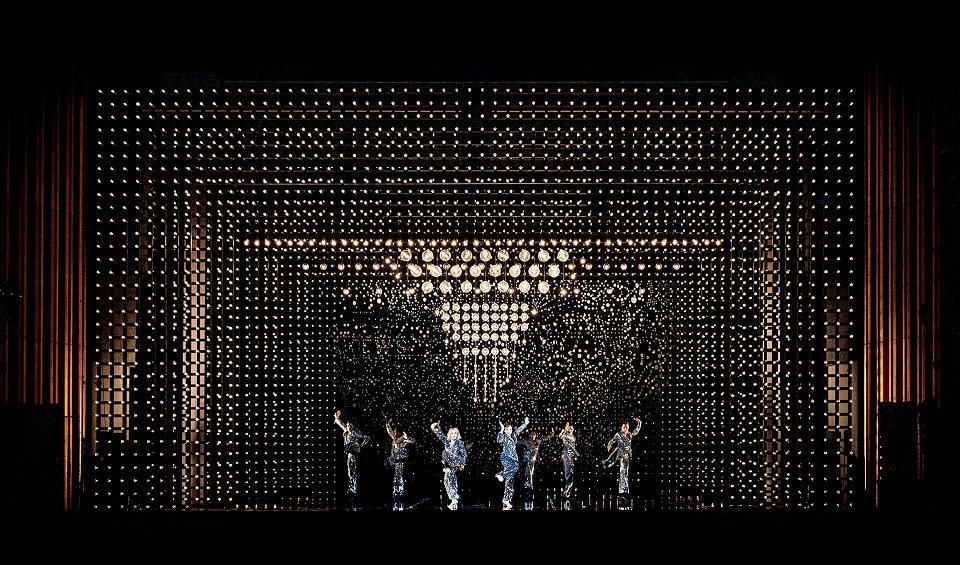
Find out more about current industry trends, exciting projects and interesting news about Emilum. We also present current topics from research and science in this section.
